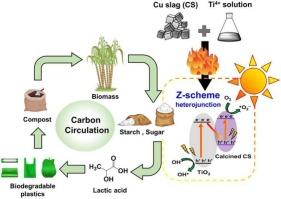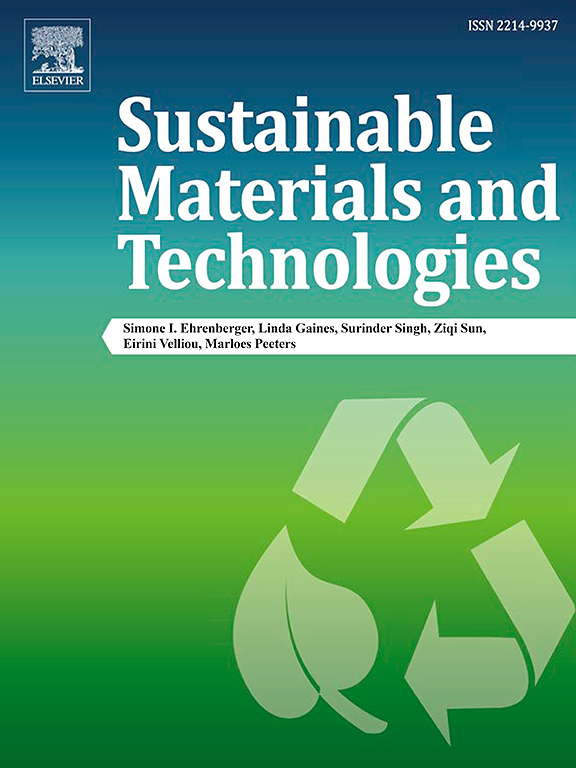Transforming temperature effects on TiO2/iron oxide composite derived from copper slag as a photocatalyst for glucose conversion
IF 8.6
2区 工程技术
Q1 ENERGY & FUELS
引用次数: 0
Abstract
Amorphous copper slag (CS), a by-product of the matte smelting and refining processes in copper smelting, contains approximately 47 % iron. This study explores the potential of using CS as an iron source to create a photocatalyst composite with TiO2 through calcination at various temperatures (550, 700, 850, and 1000 °C) in order to achieve efficient photocatalytic conversion of glucose to lactic acid under visible light irradiation (λ ≥ 380 nm) at room temperature. All the calcined composites exhibited superior glucose conversion and lactic acid production compared to the uncalcined composite (CT) and pure TiO2. The composite calcined at 700 °C provided the highest yield and selectivity for lactic acid. This improvement is attributed to the optimal ratio of Ti(III)/Ti(IV) and the effective separation of photogenerated electron-hole pairs via the Z-scheme heterojunction in the calcined CT composite. This process contributes to the circular economy by recycling waste materials to produce higher-value-added chemicals from biomass using sustainable energy sources.

铜渣衍生的 TiO2/氧化铁复合材料作为葡萄糖转化光催化剂的转化温度效应
无定形铜渣(CS)是铜冶炼过程中锍熔炼和精炼的副产品,含铁量约为 47%。本研究探讨了利用 CS 作为铁源,通过不同温度(550、700、850 和 1000 °C)的煅烧与 TiO2 制成光催化剂复合材料的潜力,以便在室温可见光照射(λ ≥ 380 nm)下实现葡萄糖到乳酸的高效光催化转化。与未煅烧的复合材料(CT)和纯 TiO2 相比,所有煅烧过的复合材料都表现出更高的葡萄糖转化率和乳酸产量。在 700 °C 煅烧的复合材料的乳酸产量和选择性最高。这一改进归功于 Ti(III)/Ti(IV)的最佳比例,以及通过煅烧 CT 复合材料中的 Z 型异质结有效分离光生电子-空穴对。该工艺通过回收废料,利用可持续能源从生物质中生产出高附加值的化学品,为循环经济做出了贡献。
本文章由计算机程序翻译,如有差异,请以英文原文为准。
求助全文
约1分钟内获得全文
求助全文
来源期刊

Sustainable Materials and Technologies
Energy-Renewable Energy, Sustainability and the Environment
CiteScore
13.40
自引率
4.20%
发文量
158
审稿时长
45 days
期刊介绍:
Sustainable Materials and Technologies (SM&T), an international, cross-disciplinary, fully open access journal published by Elsevier, focuses on original full-length research articles and reviews. It covers applied or fundamental science of nano-, micro-, meso-, and macro-scale aspects of materials and technologies for sustainable development. SM&T gives special attention to contributions that bridge the knowledge gap between materials and system designs.
 求助内容:
求助内容: 应助结果提醒方式:
应助结果提醒方式:


